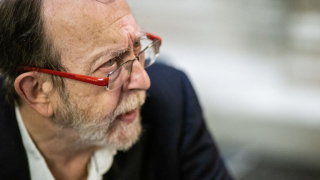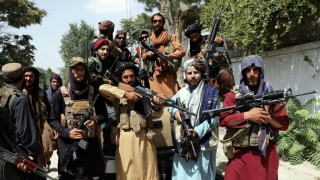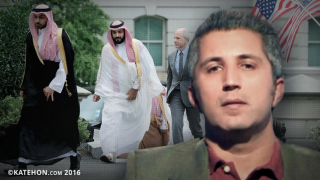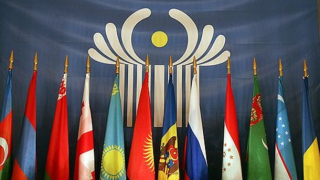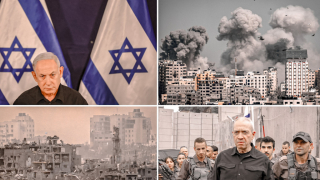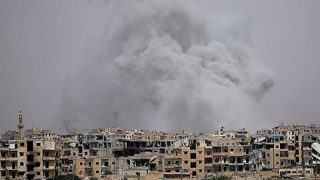Principles and roots of suicide operations and self-harm in MKO
09.11.2020
The Western and European media, which are always looking for controversial and seemingly pure subjects, this time went to the Mojahedin-e Khalq group.
The Mojahedin-e Khalq terrorist group is an Islamic-extremist Marxist group that chooses from any school what it wishes and treats it as an ideology. The group's struggle model is armed, but this time to achieve their nefarious purposes they clung to the lives of innocent people, and they planned for a despicable and vile action, and at the same time to maintain their organizational goals, the organization of which are being shaken day by day, and that action is nothing but "self-immolation."
In June 2003, the Western and European media reported countless and shocking news of self-immolation in European countries, and the broadcast of this news on television and virtual networks caused the surprise and concern among officials and people of European countries. European media also reported that the people who are doing this are members of the Mojahedin Khalq Organization.
The most important thing that surprised and made someone to think was that the way of shooting these self-immolations is planned and designed in a way that is somewhat similar to the action scenes of movies.
Gradually, the MEK announced through its official media that these self-immolations are in protest of the arrest of Maryam Rajavi and a number of MEK members by the French police, and it was said that all these self-immolations were done spontaneous by members, but the point here and the question that arises is what is more important to the human life than to be able to let it go, and the answer to this question for many former MEK members or people who are familiar with the goals and activities of the organization were clear, but for the French police and public opinion, this question in addition to the police investigation remained unanswered, which led to the self-immolation of at least 25 people in various European cities and caused the deaths of two women named "Neda Hassani" and "Sedigheh Mojaveri".
Another important point that is remarkable is that the events that until then were presented as threats and words by the leaders of the Mojahedin Khalq group, for the first time in an unpredictable and unfortunate way, were placed and practically exposed to the public.
These events do not end here, and later reappeared in various forms, like self-harm.
Systematic self-harm (including self-harm, self-immolation and human shield):
Self-immolation is a systematic self-harm that prepares individuals in an organization or organization to threaten or intimidate public opinion or even the members of the organization themselves.
The Mojahedin clearly and explicitly allow themselves to use any violence to achieve their goals.
Mansour Ghadrkhah, a filmmaker who is a member of the organization and the National Council of Resistance, told the New York Times on January 31, 2003, that a member of the organization declared his readiness for self-immolation in the official sources of the organization: "Hundreds of people are on the self-immolation list, and if the French government does not end its common conspiracies with the Iranian regime, they are determined to set themselves on fire and do the self-immolation."
Since self-immolation is a form of self-harm, in “the RAND report” addresses this issue as follows: "According to the measures taken in the Mojahedin Khalq Organization to convince and obedience of members to implement the goals of the organization, sometimes there are objections from the members of the organization that If they express these objections, they will be physically or conspiratorially removed from the organization and nothing but death awaits them, and they will inevitably be forced to commit violence against themselves by suicide. One of the MKO's sectarian characteristics is "centralized suicide", although suicide has not been used as a tactical weapon in terrorist acts since 1981.”
But unfortunately, the MEK has used the "suicide threat" as a method in negotiating or disrupting investigations.
This was proved in protest of the actions that led to the arrest of Maryam Rajavi (one of the leaders of the Mojahedin Khalq), and during this issue in 2003, 10 members of the Mojahedin Khalq Organization in Paris set themselves on fire.
One of the concerns is that if the Iraqi Multinational Forces (MNF-I) tries to dismantle the MEK, the self-immolation that took place in Paris will be repeated on a larger scale at Camp Ashraf, which has led to (JIATF) The American organization, which is the link between the host country and its own country, rejects the proposal to use force and pressure to dissolve and eliminate the organization.
Also in the book "Autopsy of an Ideological flow" by Antoine Gessler also states that: "The Paris self-immolation clearly showed to Western statesmen that the MEK was a religious sect with Stalinist tendencies (Stalinism is not a particular ideology, but methods of applying Marxism-Leninism in Russia that adapt some interpretations of theories to practice) that make its own members to burn themselves, and this inflicted an irreparable blow on the Mojahedin, such that the head of the French counter-terrorism Pierre de Bousquet de Florian, described the Mojahedin as a religious sect (a kind of eternal extinction and collapse).”
Violent act of self-immolation is a deterrent to motivate external violence. This action is the deterrents that is done to prevent legal, civil, etc. actions, and has a kind of threatening aspect.
For example, during the evacuation of Camp Ashraf by Iraqi forces, members of the Mojahedin Khalq Group decided to set themselves on fire in order to threaten Iraqi forces in order to prevent legal action, and in this violent action one male member of the organization was killed and more than 30 people got injured and disabled.
More than 50 people have been killed so far in connection with Ashraf-related issues.
French government spokesperson Jean-François Cope, regarding the sectarian self-immolation of the Mojahedin-e Khalq, says: “Unfortunately, doing such acts reveals a lot about MEK leadership ideology.”
Reflections on the 2003 self-immolation of MEK members by Tom Hennigan, in the British news agency of Reuters is as follows:
"Images of men and women pouring gasoline on themselves and setting themselves on fire in the streets and capitals of Europe show the last days of groups opposed to the Tehran regime.”
From Tuesday, several supporters of the Mojahedin Khalq group tried to set themselves on fire in Paris, London, Rome, Bern, etc., and on Tuesday night, forty year-old woman died of her injuries. For many experts in Iranian affairs, these self-immolation images show the true nature of the Mojahedin.“
"I just hope that if there is a change, a transformation and a new revolution, the MEK will not take the place of the revolution, the current regime and the government." said a young Iranian man interviewed in Tehran.
On June 20, 2003, the French news agencies and Reuters reported on the internal self-immolation of members of the Mojahedin-e Khalq group in West, some of which are as follows: "Protests against the arrest of the Mojahedin-e Khalq leader continued until Thursday, which led to new rallies in Paris. In Rome, two men set themselves on fire by pouring gasoline on themselves, and at the same time an Iranian did the same in front of the Bern train station in Switzerland.”
Following the demonstrations, three Iranian women tried to set themselves on fire in Paris, two of whom were hospitalized, and a third died at Percy Military Hospital on the outskirts of Calamart due to the severity of her injuries after surviving a day.
"On Wednesday, two other Iranians set themselves on fire, but despite their best efforts, they were stopped by Berne police and failed in their committing action."



